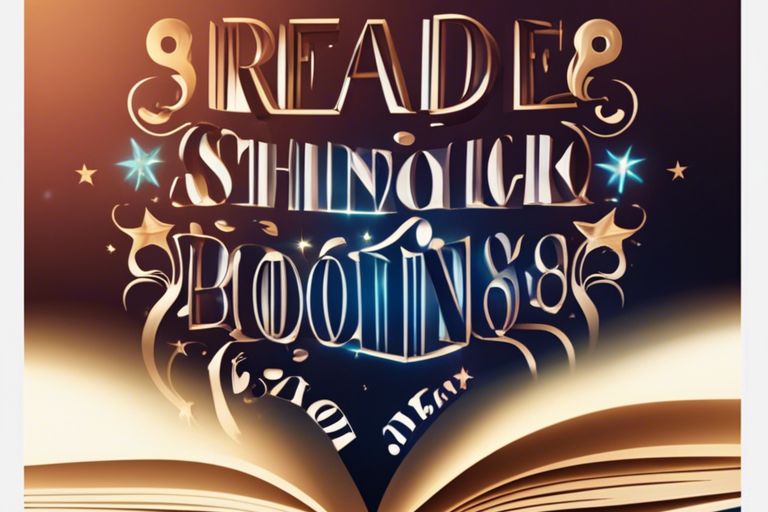With consonant blends and digraphs being key phonics skills taught in late Kindergarten and first grade, it is crucial to understand the differences between the two and how to effectively teach them. Blends, such as “pl” in “plum” and “st” in “fast,” consist of consonants representing separate sounds, while digraphs, like the “sh” in “shed,” combine two letters to create a single phoneme. In this comprehensive guide, we explore into the intricacies of blends and digraphs, offering insights on when and how to teach them to young learners. Whether you’re a seasoned educator or a parent supporting your child’s learning journey, mastering blends and digraphs is a valuable skill that can truly enhance phonics proficiency.
Key Takeaways:
- Understanding Blends vs Digraphs: Blends consist of separate sounds represented by two or three consonants, while digraphs are two-letter combinations that create a single sound. It is crucial to teach them separately due to their different nature.
- Teaching Sequence: Developmental spelling research suggests mastering digraphs before consonant blends. Typically, children grasp these skills after learning short vowels and before long vowels. A structured phonics program can guide the teaching sequence effectively.
- Effective Teaching Strategies: When teaching digraphs and blends, focus on helping students recognise and sound out the pairs correctly within words. Encourage practice through activities like blending sounds, writing words, and playing games to reinforce understanding.
Decoding the Phonics Code: Blends vs. Digraphs
Understanding Blends in Phonics
To understand blends in phonics, it’s necessary to recognise that they are combinations of consonants that produce separate sounds, like ‘pl’ in ‘plum’ or ‘st’ in ‘fast’. Each letter retains its individual sound in a blend, such as the ‘br’ in ‘brag’. Blends can consist of 2 or 3 letters and can appear at the beginning or end of a word. Teaching blends involves focusing on sound recognition and blending skills, which lay a strong foundation for reading and spelling proficiency.
Exploring the World of Digraphs
With digraphs, we investigate into two-letter combinations that represent a single phoneme, such as the ‘sh’ in ‘shed’ or ‘ch’ in ‘much’. Consonant digraphs work together to create unique sounds, enhancing a child’s phonics knowledge and decoding abilities. Research indicates that students often master digraphs before blends, highlighting the importance of introducing this concept early in phonics instruction.
Code
The Role of Blends and Digraphs in Reading and Spelling
Digraphs play a crucial role in improving children’s reading and spelling skills by enhancing their phonemic awareness and phonics decoding. By understanding and recognising blends and digraphs, young learners develop a solid foundation for decoding words accurately and building fluency in reading. Incorporating blends and digraphs into reading and spelling activities helps students apply their phonics knowledge in real-word contexts, fostering a deeper understanding of the English language’s intricate phonetic system.
Mastering Consonant Blends
Once again, for a comprehensive guide on blends and digraphs, check out Blends and Digraphs: What Are They, and How Should You Teach Them?.
The Anatomy of Consonant Blends
For a solid foundation in phonics, understanding the structure of consonant blends is key. These are pairs or groups of consonants that produce two or three distinct sounds. They can occur at the beginning or end of a word, with each letter maintain its individual sound, such as “pl” in “plum”.
Common Consonant Blends and Their Sounds
Common consonant blends like “st” in “fast” or “sh” in “shop” play a vital role in mastering phonics. These pairings create unique sounds, with each blend having its own distinct pronunciation that adds depth to the English language.
Tips for Identifying and Pronouncing Consonant Blends
For effective pronunciation and recognition of consonant blends, follow these tips:
- Practise blending sounds together consistently
- Use visual aids like magnetic letters
Plus, with continued practice and exposure, you can build fluency in recognising and pronouncing various consonant blends with ease. Knowing these blends inside out will be a game-changer in phonics mastery.
Demystifying Consonant Digraphs
The Concept of Consonant Digraphs
An important step in teaching phonics to young learners is introducing them to the concept of consonant digraphs. Despite the similarities with consonant blends, digraphs are unique in that they consist of two letters representing a single sound. To help your students grasp this crucial phonics skill, check out How to Teach Kids to Read: 9 Easy Steps for valuable insights and strategies.
List of Common Consonant Digraphs
One of the fundamental aspects of teaching consonant digraphs is familiarising students with common pairs like ‘sh’, ‘ch’, and ‘th’. These digraphs combine to form distinct sounds, such as the ‘sh’ in ‘ship’. Understanding and recognising these digraphs is key to developing strong reading skills in young learners.
The strategies for usage and pronunciation of consonant digraphs play a vital role in mastering phonics skills. One effective approach is to provide ample opportunities for students to practice reading and writing words containing digraphs. By incorporating hands-on activities and games, educators can make learning engaging and fun for students, facilitating their overall understanding of digraphs.
This hands-on approach allows students to explore digraphs in diverse contexts, enhancing their phonemic awareness and reading fluency. Encouraging regular practice and reinforcement of digraphs through various activities can significantly improve students’ mastery of these important phonics skills.
Tackling Vowel Digraphs
Navigating Through Vowel Digraphs
On your quest to master blends and digraphs, navigating through vowel digraphs can be a crucial step. Vowel digraphs, like ‘ai’ in ‘rain’ or ‘ee’ in ‘bee,’ represent a single sound made by two vowels working together. Understanding and practising vowel digraphs will enhance your phonics skills and boost your reading fluency.
Examples and Variations of Vowel Digraphs
Digraphs are key elements in phonics, especially when exploring vowel digraphs. ‘Digraphs’ refers to a combination of two letters that represent a single sound. Through examples such as ‘oa’ in ‘boat’ or ‘ie’ in ‘pie,’ mastering these variations will enrich your understanding of vowel sounds and word pronunciation.
Long Vowel Sounds and Their Impact
For a comprehensive grasp of phonics, delving into long vowel sounds and their impact is crucial. Long vowel sounds, such as ‘a-e’ in ‘cake’ or ‘o-e’ in ‘stone,’ play a significant role in word formation and pronunciation. By understanding and practising these sounds, you can enhance your reading and spelling abilities significantly.
Advanced Phonics: R-Controlled Vowels and Diphthongs
For breaking down r-controlled vowels:
R-Controlled Vowels
R-Controlled vowels like ‘ar’, ‘er’, ‘ir’, ‘or’, and ‘ur’ can pack a punch in pronunciation. In the ‘ar’ sound, ‘car’ and ‘far’ showcase a distinctive twist. Utilizing our phonics skills, let’s research into mastering these unique vowel combinations.
For understanding diphthongs:
Understanding Diphthongs
With diphthongs, such as ‘oi’, ‘oy’, ‘ou’, and ‘ow’, we encounter a blend of two vowel sounds in a single syllable. Words like ‘coin’ and ‘boy’ exemplify the dynamic nature of these vowel pairs. By honing our phonics abilities, we can grasp the intricacies of diphthongs effortlessly.
Down the pathway of phonics enlightenment, we embrace the complexity of diphthongs. Unlocking the hidden potential of combinations like ‘ea’, ‘ie’, ‘ui’, and ‘eu’ unravels a world of vocal nuances. Let’s launch on this journey with zeal and precision, enriching our phonics repertoire.
Learning to Recognize and Enunciate Complex Vowel Sounds
An exploration into complex vowel sounds entails a keen ear and a sharp tongue. With phonics as our guiding light, we navigate the labyrinth of intricate combinations like ‘ear’, ‘air’, ‘ure’, and ‘eer’. By mastering these challenging vocal constructs, we elevate our phonics prowess to new heights.
Practical Exercises and Activities for Phonics Mastery
Phonics Games and Puzzles
All young wizards of phonics must engage in fun and challenging activities to master blends and digraphs. Phonics games and puzzles provide an interactive way for students to practice recognising and using these crucial phonetic elements. Whether it’s a matching game with blend cards or a word search featuring digraphs, these activities keep learning engaging and effective.
Reading Aloud Sessions
Phonics perfectionists know the power of reading aloud sessions in honing their skills. These sessions not only improve fluency but also help in identifying blends and digraphs in context. A regular practice of reading aloud, focusing on words with these phonetic aspects, will enhance phonics wizardry in no time.
A reading aloud session is a golden opportunity to spot blends and digraphs and to reinforce their sounds and patterns. It’s an vital practice for developing a strong phonics foundation.
Writing Exercises for Blends and Digraphs
On the path to phonics mastery, writing exercises play a vital role in cementing knowledge of blends and digraphs. These exercises involve tasks like spelling words with blends correctly, constructing sentences with digraphs, and forming words with specific blend patterns. Through consistent practice, students sharpen their writing skills while solidifying their grasp on these phonetic elements.
It is through writing exercises that students can apply their understanding of blends and digraphs in a practical and hands-on manner. This ensures a holistic approach to phonics mastery, encompassing reading, speaking, and writing skills.
Tips and Tricks for Phonics Success
Mnemonic Devices and Memory Aids
An effective way to help students master blends and digraphs is through mnemonic devices and memory aids. These can be simple tricks or phrases that help students remember the sounds associated with specific blends and digraphs. For example, using a phrase like “Fish swim silently in the ocean” can help students remember the /sh/ sound in the word “fish.” Mnemonic devices can be a fun and engaging way to reinforce phonics concepts in a memorable way.
Visual and Auditory Learning Tools
Visual and auditory learning tools are vital for teaching blends and digraphs effectively. Visual aids such as flashcards, posters, and charts can help students visualise the blends and digraphs, while auditory tools like audio recordings and pronunciation guides can help reinforce the correct sounds. Incorporating a variety of visual and auditory learning tools can cater to different learning styles and enhance overall understanding and retention of blends and digraphs.
The Importance of Practice and Repetition
With phonics skills like blends and digraphs, practice and repetition are key to mastery. Regular practice of blending sounds together, identifying blends and digraphs in words, and applying them in reading and writing tasks can help solidify students’ understanding and fluency. Revisiting blends and digraphs regularly and providing plenty of opportunities for practice can help reinforce these important phonics skills. This ensures that students retain the knowledge and can apply it confidently in their literacy activities. This encourages students to develop phonics proficiency, which is crucial for their reading and writing development.
Common Pitfalls and How to Avoid Them
Confusion Between Similar Sounds
An important pitfall to watch out for when teaching blends and digraphs is the confusion between similar sounds. Blends like “fl” and “sh” may sound alike to young learners, leading to errors in decoding and spelling. To address this, provide ample practice distinguishing and pronouncing these sounds correctly through activities like sound blending exercises and word games.
Pronunciation Difficulties and Solutions
Between blends and digraphs, students may encounter pronunciation difficulties due to the unique nature of each phonics skill. To help students overcome these challenges, focus on guiding them in correctly articulating the sounds of blends and digraphs. Encourage them to pay attention to the individual sounds within a blend and the combined sound produced by a digraph.
Aim to provide clear instructions and ample practice opportunities to reinforce correct pronunciation and build confidence in tackling blends and digraphs.
Overcoming Blends and Digraphs Challenges
Solutions to overcoming challenges with blends and digraphs lie in consistent practice and targeted guidance. Encourage students to actively engage with blends and digraphs through interactive activities that enhance their phonics skills. Incorporate a variety of visual, auditory, and kinesthetic learning methods to cater to different learning styles and reinforce comprehension.
By offering a supportive learning environment and tailored interventions, students can confidently master blends and digraphs, paving the way for improved reading and spelling abilities.
Resources for Expanding Your Phonics Knowledge
Book Recommendations for Deepening Understanding
With the importance of mastering blends and digraphs in phonics, delving into additional resources can greatly benefit your learning journey. Consider exploring books such as “From Sounds to Spelling” program, which covers a range of phonics concepts, including consonant digraphs. Other recommended reads include “Phonics for Dummies” by Susan M. Greve and “The Phonics Handbook” by Sue Lloyd and Sara Wernham, offering comprehensive guides to enhance your understanding of blends and digraphs.
Websites and Apps for Interactive Learning
Deepening your phonics knowledge through interactive platforms can be both engaging and informative. Explore websites like PhonicsPlay or Teach Your Monster to Read, which offer a variety of games and activities focusing on blends and digraphs. Additionally, apps such as ABCmouse and Reading Eggs provide interactive features to reinforce phonetic concepts in a fun and interactive way.
This subsection explores the use of technology in enhancing phonics skills, providing a hands-on approach to mastering blends and digraphs.
Online Communities and Forums for Support and Tips
- Joining online communities and forums can offer valuable support and tips in mastering phonics skills, especially blends and digraphs
- Engage with fellow educators, parents, and phonics enthusiasts to share resources, strategies, and success stories
Resources Resources such as The National Centre for Excellence in the Teaching of Phonics (NCETM) forums and the Phonics Blog can provide a platform for collaboration and continuous learning in phonics education. This subsection highlights the importance of community engagement in enhancing phonics knowledge and proficiency.
Book
With a plethora of resources available to deepen your understanding of phonics skills, exploring books on blends and digraphs can provide valuable insights into mastering these phonetic concepts. Books such as “Phonics Made Easy Flashcards” by Carol Vorderman and “The Phonics Toolkit” by Dr. Rosemary Sassoon offer practical strategies and exercises to improve phonics proficiency.
Building a Comprehensive Phonics Routine
Daily Phonics Practice Techniques
Routine practice is key to mastering blends and digraphs. Make phonics a regular part of your daily routine by incorporating activities like word building, sound blending, and interactive games. Consistent practice will help reinforce these important phonics skills and improve reading fluency over time.
Incorporating Blends and Digraphs into Everyday Reading
Techniques like highlighting blends and digraphs in reading materials can help students recognise and apply these skills in context. Encourage students to sound out words with blends and digraphs while reading, reinforcing their understanding through practical application. By integrating blends and digraphs into everyday reading, students can improve their decoding skills and overall reading comprehension.
Creating a Phonics-Friendly Environment at Home or Classroom
Digraphs and blends can be reinforced outside of structured learning time by creating a phonics-rich environment. Display charts or posters highlighting blends and digraphs, encourage word games that focus on these phonetic elements, and provide reading materials that feature a variety of blends and digraphs. By immersing students in a phonics-friendly environment, you can support their phonetic development and reading success.
Phonics Beyond the Basics: Multisyllabic Words and Advanced Texts
Approaching Multisyllabic Words with Blends and Digraphs
Beyond the basics of blends and digraphs lie the complex realm of multisyllabic words. When mastering these words, it’s crucial to break them down into their individual sounds, especially when encountering blends and digraphs. With practice, students can learn to decode longer words efficiently, recognising the various blend and digraph combinations within them.
Navigating Advanced Texts
Words
- It
Assessment and Progress Tracking in Phonics
Tools for Measuring Phonics Growth
With the importance of phonics skills development in mind, it is crucial to have tools for measuring growth accurately. Assessing students’ progress in blends and digraphs can be done through a combination of formative assessments, standardised tests, and observations. These tools provide valuable insights into individual strengths and areas needing improvement.
Interpreting Phonics Assessment Results
Progress in phonics can be effectively monitored and interpreted through assessment results. Understanding how to interpret the data gathered from assessments is important for educators and parents alike. This information enables targeted interventions to support each student based on their specific needs and learning pace.
This chapter explores various methods of assessing and tracking progress in phonics, providing practical guidance for educators and parents to support students in mastering blends and digraphs effectively.
Setting Goals and Achieving Milestones
Tracking progress in phonics involves setting achievable goals and milestones for students to reach. By establishing clear objectives and monitoring progress towards them, educators can ensure that students are on the right track in their phonics development journey. Celebrating small victories along the way can also boost students’ confidence and motivation.
Setting SMART goals (Specific, Measurable, Achievable, Relevant, Time-bound) is a proven approach to ensuring success in mastering phonics skills. By creating a roadmap for progress, educators can tailor instruction to meet individual student needs effectively.
Conclusion
On the whole, mastering blends and digraphs is crucial for young learners to develop strong phonics skills. Understanding the difference between blends and digraphs and teaching them effectively can greatly impact a child’s ability to read and spell accurately. By following a structured phonics program like From Sounds to Spelling and incorporating various activities to practice blends and digraphs, educators can help students become phonics wizards. Consistent practice, reinforcement, and a clear understanding of these phonics concepts will set a solid foundation for future reading and writing success.
FAQ
Q: What are blends and digraphs in phonics?
A: Blends are two or three-letter combinations of consonants that represent separate sounds, such as “pl” in “plan” or “st” in “fast.” Digraphs, on the other hand, are two-letter combinations that represent a single sound, like “sh” in “shop” or “ch” in “chin.”
Q: How do blends and digraphs differ in nature?
A: Blends consist of individual consonant sounds that retain their uniqueness when pronounced together, while digraphs collaborate to create a single distinct sound. For example, in the blend “st” in “star,” you can hear the separate /s/ and /t/ sounds, whereas in the digraph “sh” in “shed,” the /sh/ sound is produced by the collaboration of “s” and “h.”
Q: When and how should blends and digraphs be taught in a phonics curriculum?
A: Phonics programs typically introduce digraphs before blends, with children mastering both skills after learning short vowels but before long vowels. Early on, students are taught common digraphs like “ch,” “sh,” “th,” and “wh,” before progressing to blends like initial “s,” “l,” “r,” and later, final blends. Best practices include engaging activities like blend word puzzles and practice games to reinforce understanding and application of these phonetic concepts.








